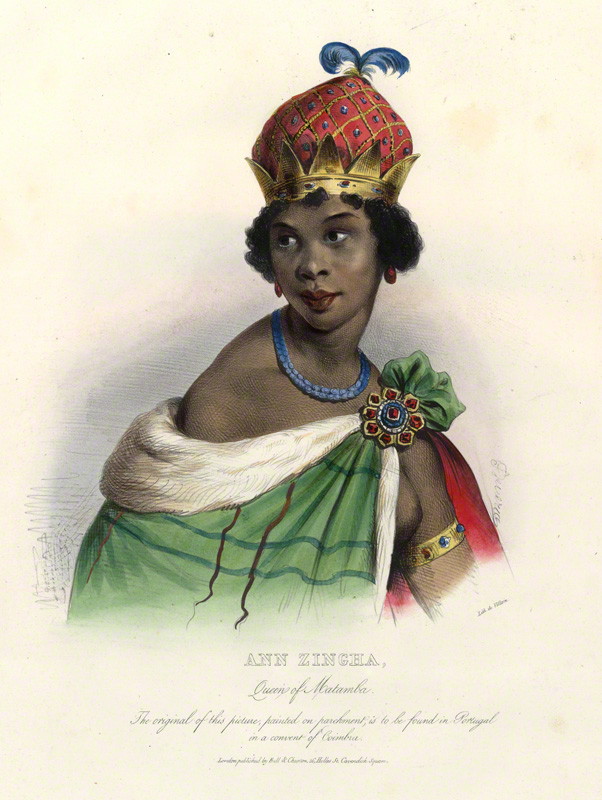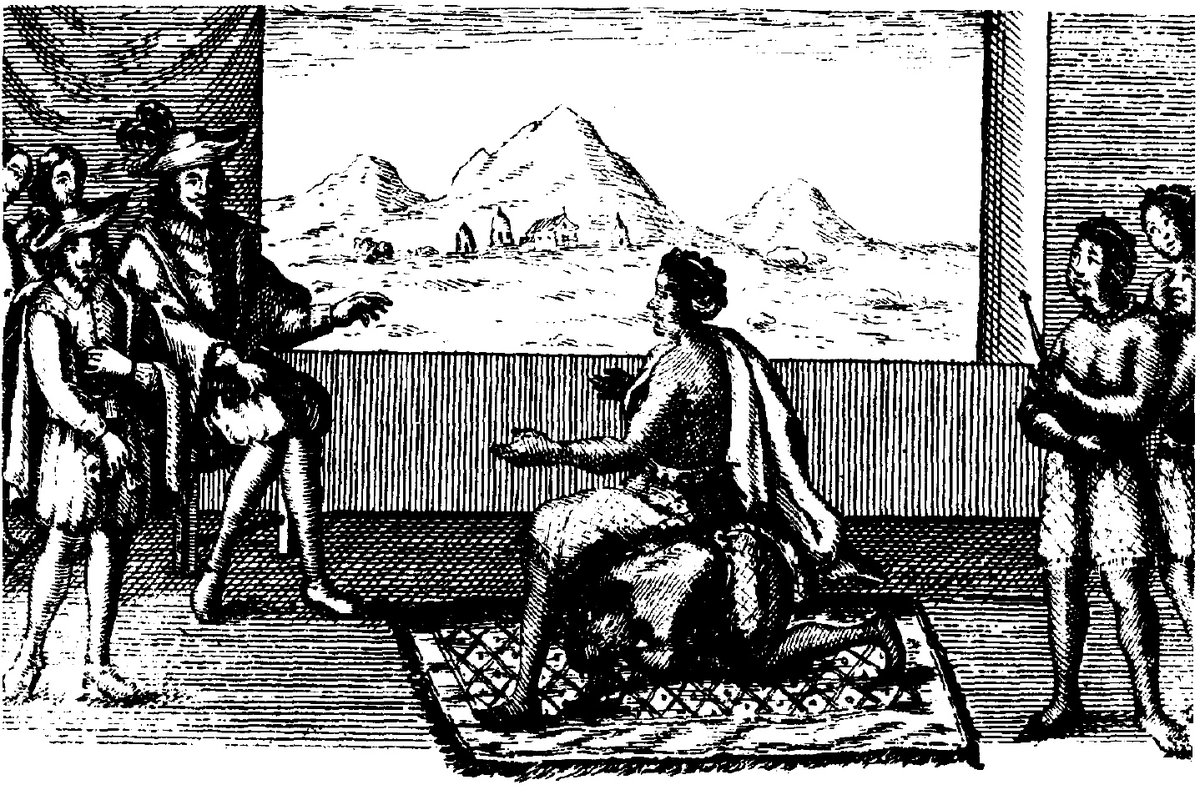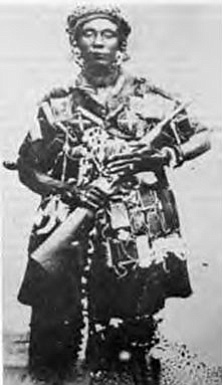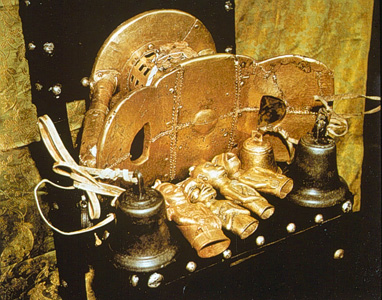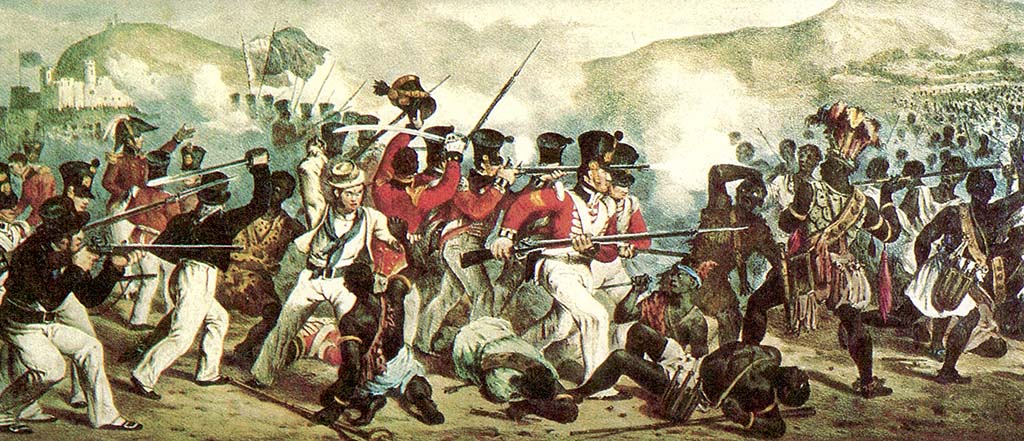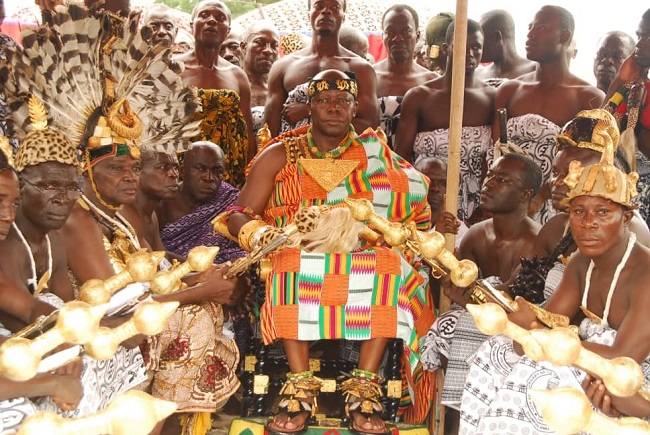The Warrior-Queens of Africa
The kingdom of Ndongo was located in what is now Angola. Queen Nzinga, its most famous monarch, is best known for having negotiated with, then later defeating, the Portuguese forces which attempted, in the late 16th and early 17th centuries, to colonise the kingdom.
Her intelligence, confidence, strength of will, and devotion to her people has made her a legend to her descendants. When her brother became king, he feared that her living son, and potential sons, might one day overthrow him. So he had the boy killed and Nzinga sterilised.
Fearing for her own life, Nzinga fled to the nearby kingdom of Matamba. But as Portuguese influence in the region grew, the king of Ndongo was ill-equipped to deal with them.
He called for Nzinga to come and help him as an ambassador, and she agreed, putting her devotion to her people above the pain he had caused her and the resentment she held in her heart for him.
When meeting with representatives from Ndongo, the Portuguese would provide them only with mats, while they sat in chairs and looked down upon them to assert their superiority.
They tried this same tactic with Nzinga who attended the negotiations in her opulent traditional garb to show that the culture of Ndongo was not inferior to that of the Portuguese. The Portuguese tactic failed. Nzinga had one of her soldiers kneel down and she sat on his back.
She spoke face-to-face with the Portuguese governor, neither wavering nor floundering, and managed to secure a peace treaty and form an alliance with the Portuguese.
After her brother& #39;s death, however, the Portuguese betrayed the treaty, and allied themselves with rival African kingdoms that sought the destruction of Ndongo. Nzinga also had to see off numerous challengers and usurpers before she assumed the throne in the early 1640s.
She swiftly formed an alliance with the Dutch who had seized Luanda, and who intended to replace Portuguese influence in central-western Africa. With their help, she battled against the Portuguese for nearly twenty years until they gave up finally in 1957.
Afterwards, she turned her attention to re-building the wealth and prestige of her kingdom, which had been ruined by years of conflict. As she grew older, she still had to fend off numerous assassination attempts from members of rival kingdoms and the disgruntled Portuguese.
She drew her last breath, aged 80, in 1663. Every attempt made on her life, she had foiled and avoided. Today, in Angola, and throughout Africa, she is remembered and honoured as a hero and protector of her people, as well as a symbol against oppression.
Another no less impressive queen was Yaa Asantewaa of the Ashanti who, I am proud to say, is an ancestor is of mine!
The Ashanti kingdom located (still!) in modern-day Ghana was founded in the 17th century by its first king Osei Tutu, and his priest Okomfo Anokye.
Its most treasured cultural item is the majestic Golden Stool, called down from the sky by Anokye and presented to Osei as a symbol of his kingship and eminence. A statue of Anokye stands in the city of Kumasi, the capital city and centre of the Ashanti people.
The stool is used to swear in new Ashanti kings, and the Ashanti believe that, if it is either taken or destroyed, the Ashanti kingdom will disintegrate. As such, the stool is rarely brought out in public. Even now, only the king and a few close advisors know of its location.
As British influence on Africa& #39;s west coast increased, they formed an alliance with the Ashanti& #39;s tribal rivals, the Fante. They came to hear of the Golden Stool and believed that if they could seize it, they could overcome the warlike Ashanti that often beat them in battle.
Frederick Hodgson, the British colonial administrator of the Gold Coast at that time seemed desperate to get his hands on it. As David Lloyd George noted, & #39;Hodgson& #39;s quest for the Golden Stool was something like the quest for the Holy Grail.& #39;
He marched into Kumasi and demanded from the Ashanti the stool, even to go as far as to suggest that he should sit on it! As you can imagine, this ignited the anger of the Ashanti and, in particular, the anger of Yaa Asantewaa, a matriarch of Ejisu, one of kingdom& #39;s regions.
Aged 65 and well-respected within the community, she made it clear to the British, and to the Ashanti nobles, that she, and many others, would rather fight and die than hand over the stool.
However, after having fought against the British for some years now, many Ashanti nobles did not have the appetite to fight again. To add to that, their king (the Asantehene) had been exiled to the Seychelles by the British, so he could not rally them and they were demoralised.
Yaa Asantewaa castigated and insulted the men for their cowardice. She said, in a speech that has been passed down through Ashanti oral tradition, that if the men did not have the will to fight, then the women would drive out the British.
She fired the first shot against them, and her tribesmen had little choice but to follow her. Though she fought bravely and besieged the British at their fort in Ashantiland she was eventually beaten a by British-Fante-Yoruba alliance.
She was captured and exiled to the Seychelles, where she died in 1924. And as for the stool? Long before the fighting even began, Yaa Asantewaa had hidden the real one in the dense forests of Ashantiland! The stool that the British claimed after their victory was a fake.

 Read on Twitter
Read on Twitter